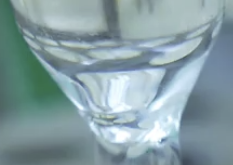Pentylene Glycol (1,5-Pentylene glycol) is an organic compound with a similar structure to alkanes, but with two hydroxyl groups -OH instead of two hydrogen atoms.
The name describes the structure of the molecule:
- "Pentylene" refers to a five-carbon alkyl group, and "glycol" indicates that this compound is a diol, meaning it has two hydroxyl (-OH) groups. Therefore, Pentylene Glycol is a diol with a five-carbon alkyl group.
The synthesised extraction process takes place in different steps:
- Hydration. The first step involves the hydration of 1-pentane, a hydrocarbon with a triple bond. In this reaction, water (H2O) is added across the triple bond of the 1-pentane molecule to form a 2-pentanol molecule.
- Oxidation. 2-pentanol is oxidised using a catalyst and an oxidising agent such as oxygen or hydrogen peroxide. This reaction converts the alcohol group of the 2-pentanol molecule to an aldehyde group, forming pentanal.
- Hydrogenation. In the third and final step, pentanal is hydrogenated, i.e. reacted with hydrogen gas in the presence of a catalyst. This reaction converts the aldehyde group of the pentanal molecule to an alcohol group, forming pentylene glycol.
It comes in the form of colorless liquid

What it is used for and where
Cosmetics
Pentylene Glycol is a glycolic component used in cosmetics to provide a pronounced slipperiness to the liquid.
Skin conditioning agent. Miscellaneous. Ingredients that have the task of modifying the condition of the skin when it is damaged or dry by reducing its flakiness and restoring its elasticity.
Solvent. It is a substance for dissolving or dispersing surfactants, oils, dyes, flavourings, bactericidal preservatives in solution.
Preservative. Any product containing organic, inorganic compounds, water, needs to be preserved from microbial contamination. Preservatives act against the development of harmful microorganisms and against oxidation of the product.
The most relevant studies on this ingredient have been selected with a summary of their contents:
Due to the lipophilic properties of the uppermost skin layer of the stratum corneum (SC), it is highly challenging to attain therapeutic concentrations of active substances; hydrophilic drugs, in particular, penetrate poorly. The purpose of this study was the improvement of the topical bioavailability of the hydrophilic dipeptides L-carnosine and its related compound N-acetyl-L-carnosine. Different strategies were investigated. On the one hand, an enhancer molecule, 1,2-pentylene glycol (PG), was added to a standard preparation, and on the other hand, a microemulsion (ME-PG) system was developed. Both were compared to the standard formulation without an enhancer molecule (1).
It has been shown that Pentylene Glycol is able to improve the dermal availability of model drugs even at low concentrations. In addition, PG is an excellent moisturizing and antimicrobial agent (2).
The safety assessment of pentylene glycol (PG) has been based on a bioavailability extrapolated from those of other 1,2-glycols or an assumed 100% absorption. To make a better safety assessment and an accurate calculation of the margin of safety (MoS), the skin penetration of PG present in a commercially available sunscreen was measured in pig skin at different exposure durations. The mass balance of PG decreased with increasing exposure durations, from 98% (1 h) to 29% (24 h) and the amount of PG detected in the skin wash decreased over time from 93% to 3%. The decrease in mass balance was attributed to an unexpected volatility of PG, which was confirmed in additional experiments. The maximum bioavailable amount of PG was 123 μg/cm2 after 24 h and was considered to be worst case scenario (10 mg/cm2 i.e. 5-fold the recommended application standard dose, 2 mg/cm2). MoS values for the application of a standard dose of sunscreen after 1-24 h exposure were 140-671 in adults and, if calculated for children ratios, 87-217 Based on the available toxicological data for PG in comparison to the amounts determined to be potentially bioavailable, PG in the test sun protection product SPF 50 + does not show any safety concerns for daily usage at the recommended dosage of 2 mg/cm2 or lower (3).
Safety
Detected cases of intolerance to Pentylene Glycol are very few in number and this compound shows no safety problems for daily use at the recommended dosage of 2 mg/cm2 or less (4).

- Molecular Formula: C5H12O2
- Molecular Weight: 104.149 g/mol
- UNII:07UXZ0SCST
- CAS: 111-29-5
- EC Number: 203-854-4
- PubChem Substance ID 329767415
- MDL number MFCD00002978
- Beilstein Registry Number 1560130
Synonyms:
- 1,5-Dihydroxypentane
- Pentamethylene glycol
- Pentylene glycol
- 1,5-Pentylene glycol
- 1,5 Pentanediol
- 1,5-Pentamethylene glycol
- alpha,omega-Pentanediol
- 1.5-pentanediol
- pentan-1,5-diol
- 1,5-pentane diol
- .omega.-Pentanediol
- Pentane diol-1,5
References__________________________________________________________________
(1) Goebel AS, Schmaus G, Neubert RH, Wohlrab J. Dermal peptide delivery using enhancer molecules and colloidal carrier systems--part I: carnosine. - - Skin Pharmacol Physiol. 2012;25(6):281-7. doi: 10.1159/000341085.
(2) Duracher L, Blasco L, Hubaud JC, Vian L, Marti-Mestres G: The influence of alcohol, propylene glycol and 1,2-pentanediol on the permeability of hydrophilic model drug through excised pig skin. Int J Pharm 2009;374:39–45.
(3) Steiner A, Kugarajan K, Wullimann M, Ruty B, Kunze G. Margin of safety of pentylene glycol derived using measurements of cutaneous absorption and volatility. - Regul Toxicol Pharmacol. 2017 Jul;87:106-111. doi: 10.1016/j.yrtph.2017.05.007. Epub 2017 May 5.
(4) Steiner, A., Kugarajan, K., Wullimann, M., Ruty, B., & Kunze, G. (2017). Margin of safety of pentylene glycol derived using measurements of cutaneous absorption and volatility. Regulatory Toxicology and Pharmacology, 87, 106-111.
![]() Pentylene Glycol
Pentylene Glycol 



